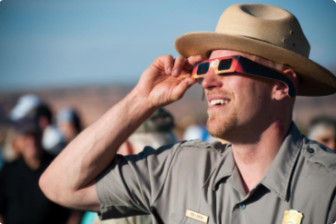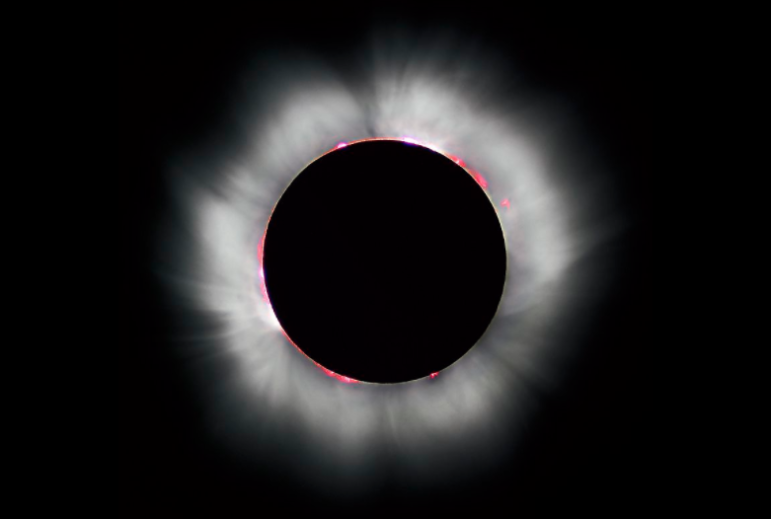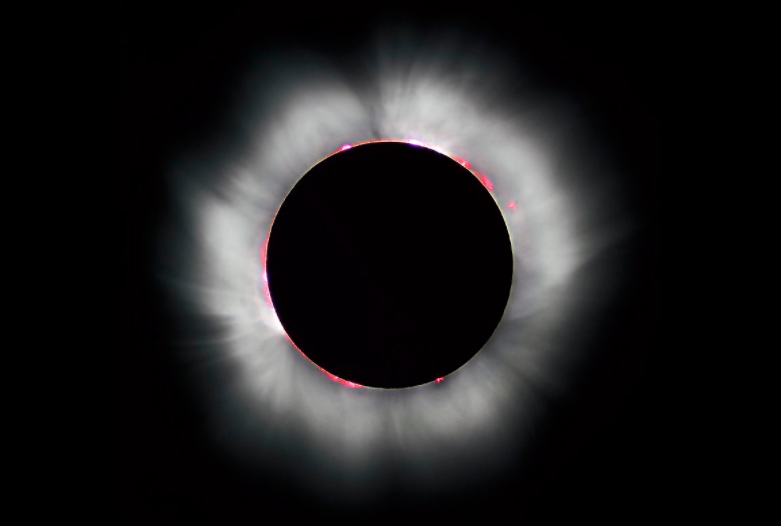The solar eclipse on Monday, Aug. 21 is a rare event. Here in Darien, we’ll see about a 70 percent partial eclipse. To celebrate, Darien Library is offering sunglasses made for safe eclipse watching on a first-come, first-served basis for 30 lucky people starting at 1 p.m., Monday.
We will also show a livestream of the eclipse indoors. Bring a friend and relax in the a/c as you watch the eclipse happen on the big screen.

___________
— an announcement from Darien Library. We suggest you get there early. Part of this article is adapted from this one published by Greenwich Free Press.
___________
The glasses will be given out one per family. We will also have 20 glasses to borrow so you can dart out and then return the glasses back to the Welcome Desk. You are also welcome to bring your own solar eclipse glasses.
Watch It On The Big Screen
On the big screen in the Community Room, starting at 2:15 p.m., NASA will be showing the total eclipse, not the partial we’ll see from Connecticut.
The total eclipse from this livestream will be from about 2:35 to 2:37 p.m. It’s a different time from the maximum coverage of the partial eclipse we’ll see from Connecticut.
- It’s important to never look directly at the sun without approved safety glasses. Pinhole projector methods involve looking at the ground. Do not use binoculars to look at the sun even with eclipse glasses on.
This is because NASA is showing footage from the path of totality down in North Carolina. The curvature of the Earth and the distance from totality affects when maximum coverage can be viewed from different spots.
This means you can watch the totality inside the Community Room then go outside to view the max coverage we’ll see in Connecticut ten minutes later. If you do this, be sure to always wear NASA-approved safety glasses.
Phases
- Start: 1:24 p.m.
- Max Coverage: 2:45 p.m.
- End: 4 p.m.
More Information
- What time can I see the eclipse?
- Which eclipse glasses are safe to use?
- How to make a pinhole projector
- How to use your just your fingers to watch the eclipse

This total solar eclipse in 1999 occurred when the moon completely covered the sun’s disk. (Photo courtesy of Oregon State University, via Wikimedia Commons)
Other Safe Ways to Watch the Eclipse
If you can’t get to the library or if they run out of glasses there, you can still experience the eclipse directly and safely.
Anne Burns of the Greenwich Astronomical Society said projection devices include a hole in a piece of cardboard, projected onto another cardboard; a refractor telescope or binoculars with a projection card behind it (though of course no one should try to look through them directly!).
________
SEE ALSO:
Make Your Own Last-Minute Pinhole Camera — Right in Your Office or Home — Takes Minutes
________
“The eclipse starts at 1:30 p.m. and ends at 4 p.m., with maximum coverage around 2:45 p.m.,” Burns said. “As the Moon moves across the sun’s disk, we’ll see the Sun become a crescent, which will change shape as the eclipse continues.”
“You can even make a lattice of your fingers and project the image on a wall, or on the ground,” Burns said. “Also, look at the sun dapples made by leaves. Ordinarily they are little circles, which are actually projections of the Sun; so during an eclipse they are little crescents.”
Burns said #12 or 14 welders’ goggles are safe to look at the Sun through.
The Eclipse Doesn’t Just Involve the Sun and Moon
To experience the eclipse more fully:
- See if any wind dies down.
- Look elsewhere in the sky (AWAY from the sun and moon) to see if stars come out.
- Do insects and birds react as if it’s night and then dawn?



Pingback: Save Your Eyes in the Eclipse: How to Make a Pinhole Camera - DarieniteDarienite